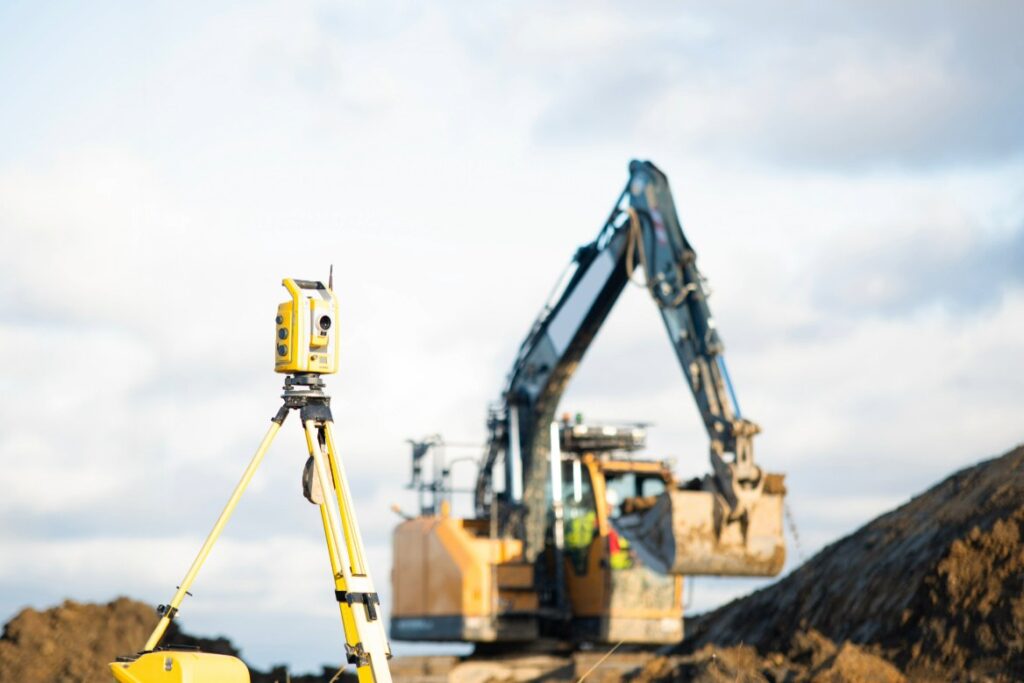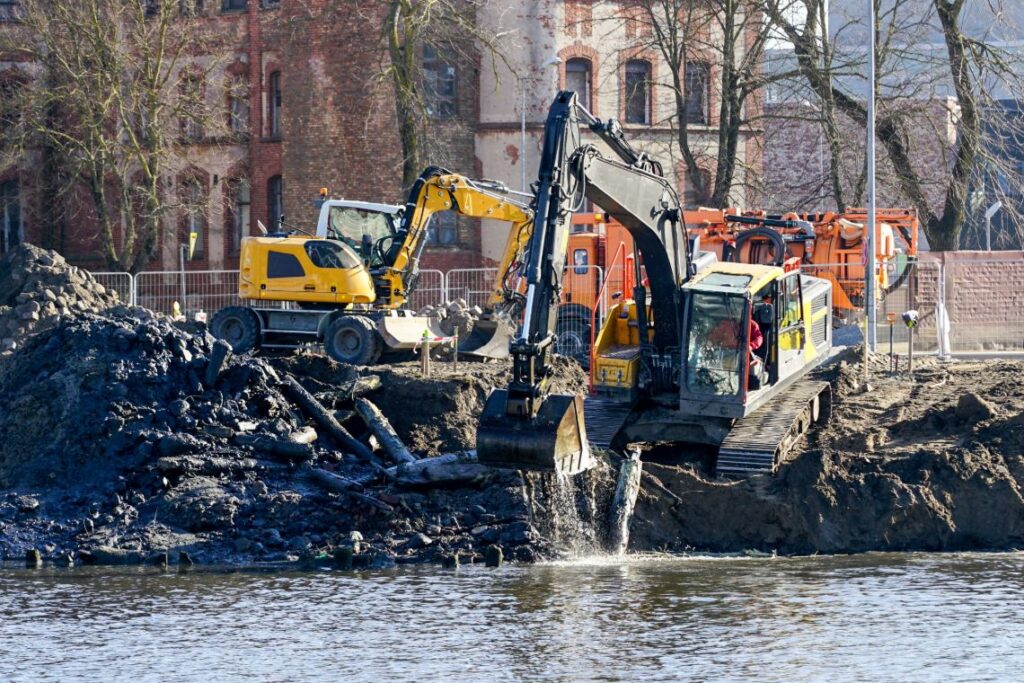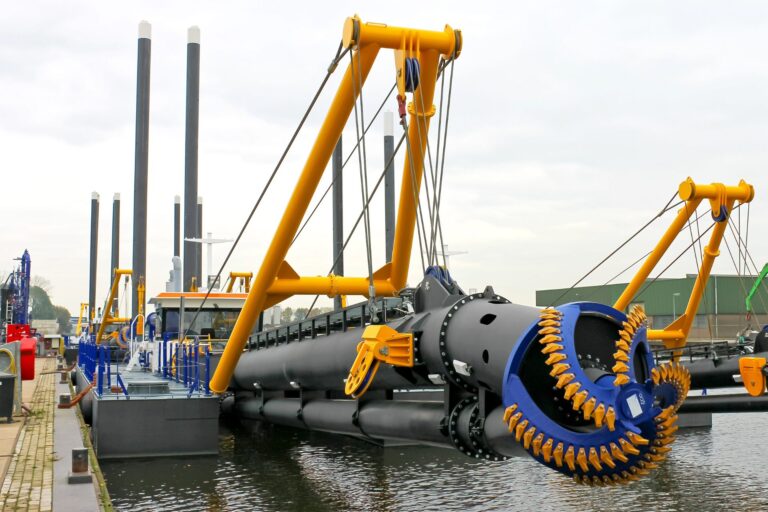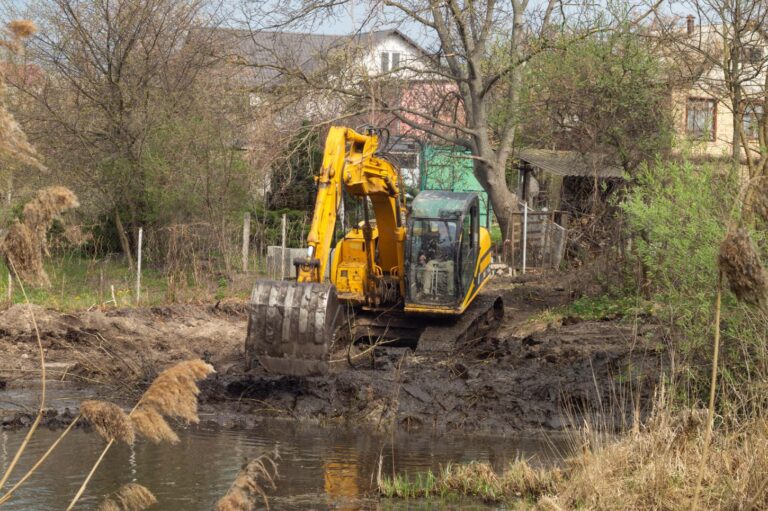The dredging industry is undergoing a significant transformation, from labor-intensive, manually guided operations to fully automated, sensor-integrated systems that improve accuracy, efficiency, and compliance. At the core of this evolution is the application of real-time monitoring and GPS technology in hydraulic dredging.
Real-time monitoring refers to the continuous tracking and analysis of dredge performance metrics, including depth, slurry density, flow rate, and equipment positioning. When paired with GPS technology, it enables centimeter-level accuracy in dredge head positioning, reducing over-dredging, minimizing environmental impact, and enhancing total material recovery.
These technologies not only streamline operations but also offer measurable benefits in terms of productivity, quality assurance, and return on investment. With real-time feedback loops and GPS-enabled dredge path control, operators can optimize every movement of the hydraulic dredging equipment, ensuring that project specifications are met with precision and minimal rework.
Understanding Hydraulic Dredging and Its Modern Role
Hydraulic dredging is a sediment removal process that uses a powerful pump system to transport a slurry mixture of water and solids through pipelines to a disposal or reuse site. Unlike mechanical dredging, which relies on buckets, grabs, or excavators to physically scoop and transport sediment, a hydraulic dredge creates a continuous flow system ideal for moving large volumes of loose or fine material over extended distances.
In contrast to airlift or pneumatic dredging, typically reserved for low-volume or specialized projects such as scientific sampling or underwater archaeology, hydraulic dredging equipment is designed for scalability, speed, and operational efficiency. The use of centrifugal pumps, cutterheads, and floating discharge lines allows hydraulic dredges to operate effectively in deep water, remote locations, and environmentally sensitive areas where minimal disturbance is required.
Hydraulic dredging equipment is typically deployed in scenarios where large volumes of soft sediment need to be removed efficiently and continuously. Common applications include maintaining navigational channels in rivers and harbors, managing sediment in industrial lagoons, removing tailings in mining operations, and restoring stormwater or wastewater ponds. In each case, the ability of hydraulic dredging equipment to handle high-throughput operations with real-time control makes it a preferred solution for complex, large-scale dredging projects.
The integration of advanced instrumentation has further enhanced the performance of modern hydraulic dredges, ensuring that every cubic meter of material is moved with purpose, precision, and environmental accountability.
Core Components of a Modern Hydraulic Dredging System

Successful hydraulic dredging operations rely on a suite of integrated technologies designed to maximize material throughput, maintain dredging precision, and ensure system reliability. Each component in the system plays a crucial role in the hydraulic dredge’s performance, especially when operating in challenging conditions or over extended periods.
Cutterhead (if applicable):
In more compact or cohesive sediments, a rotating cutterhead is mounted on the suction inlet of the hydraulic dredge to agitate and fragment the material. This enables the dredge pump to maintain a consistent slurry mixture, which is essential for pipeline transport.
Slurry Pumps:
At the heart of every hydraulic dredging system is a high-capacity slurry pump. This critical piece of hydraulic dredging equipment generates the suction and discharge forces necessary to move large volumes of sediment-laden water through the pipeline network. These pumps are designed to handle abrasive solids with minimal wear and high efficiency.
Floating and Land Pipelines:
These pipelines form the transport corridor between the dredge and the discharge site. Floating sections connect the mobile hydraulic dredge to stationary discharge lines on land, allowing for flexible positioning across varying water depths and site conditions. Proper pipeline selection is crucial for minimizing head loss and maximizing pump performance.
Booster Pumps:
For long-distance transport, booster pumps are strategically placed along the pipeline to maintain slurry velocity and reduce system stress. This ensures continuous dredging without interruption, even in large-scale projects that require extensive pipeline networks.
GPS Units and Sonar Systems:
Precision positioning is achieved through the use of marine-grade GPS receivers, paired with sonar for bathymetric profiling. This technology allows the hydraulic dredging equipment to track real-time depth and lateral movement, helping operators avoid over-dredging or leaving material behind.
Real-Time Monitoring Sensors (Depth, Flow, Density):
Modern hydraulic dredging equipment incorporates advanced sensors that continuously track dredge depth, slurry density, and flow rates. These inputs are fed into centralized dashboards, enabling operators to adjust parameters in real-time and ensure optimal performance from the hydraulic dredge.
Together, these components form a cohesive and intelligent system that elevates traditional dredging into a data-driven, high-precision process.
The Role of GPS in Enhancing Dredging Precision
GPS technology has become a cornerstone of high-accuracy hydraulic dredging, enabling precision that was previously unattainable through manual or visual control methods. Today’s hydraulic dredges are equipped with differential GPS systems that provide sub-meter, and in some cases centimeter-level, accuracy across a dynamic working environment.
One of the primary advantages of GPS is its ability to maintain accurate positioning and alignment of the dredge. Operators can set target zones and boundaries within digital dredging charts, allowing the hydraulic dredge to stay precisely on course, even in shifting current or low-visibility conditions.
This level of control supports repeatable dredging paths, which helps avoid unnecessary overlapping or missed zones. Reducing over-dredging not only protects sensitive underwater habitats but also minimizes energy use and wear on hydraulic dredging equipment.
GPS systems are also integral to the digital mapping of dredge areas, both before and after excavation. By overlaying bathymetric data onto real-world coordinates, engineers can verify target depths and calculate the amount of removed material with greater accuracy, which is essential for billing validation, quality assurance, and regulatory reporting.
When paired with automation software, GPS data allows for real-time route adjustments. For example, if the cutterhead veers off target or sediment density changes unexpectedly, automated corrections can be triggered to maintain the hydraulic dredge’s alignment with project specifications.
Incorporating GPS into hydraulic dredging equipment not only improves operational precision but also drives greater efficiency and compliance, making it a must-have feature for any modern hydraulic dredging operation.
Real-Time Monitoring: The Heart of Operational Efficiency

In modern hydraulic dredging operations, real-time monitoring serves as the control center for achieving optimal performance. By equipping the hydraulic dredging equipment with integrated sensors and control systems, operators can continuously track key operational metrics and make immediate adjustments when needed.
Common types of data monitored in real-time include:
- Flow Rates: Indicate the amount of slurry being transported, directly impacting production efficiency.
- Slurry Density: Ensure the optimal solids-to-water ratio for efficient material transport, minimizing excessive energy use and pipe wear.
- Pump Pressure: Critical for maintaining consistent output and identifying blockages or wear in the pumping system.
- Cutterhead Torque: Provides insight into material resistance, enabling operators to fine-tune the dredging depth and cutter speed to match sediment conditions.
These data points are not only informative but also actionable. Operators can detect underperformance, clogs, or mechanical issues immediately, preventing costly delays and unplanned downtime. Adjustments to dredge parameters, such as suction depth, cutter speed, and pump settings, can be made in real-time, improving productivity and reducing strain on critical hydraulic dredging equipment components.
Another key advantage is environmental compliance. Sensors can track turbidity levels and sediment plumes to ensure operations remain within regulatory thresholds. This is particularly important in sensitive ecosystems or near populated areas, where precise control over sediment displacement is essential.
By centralizing this information through a user-friendly interface, the hydraulic dredge becomes more than just a piece of heavy machinery; it becomes a smart system that maximizes output, minimizes risk, and maintains strict control over its environmental impact.

Accuracy and Productivity: A Quantifiable Impact
The integration of GPS and real-time sensors into hydraulic dredging equipment has redefined what’s possible in terms of operational accuracy and throughput. These technologies work in tandem to reduce material loss, eliminate redundant passes, and increase dredging efficiency across the entire project lifecycle.
For example, GPS-enabled hydraulic dredges ensure precise coverage of dredging zones, reducing rework and eliminating guesswork. Operators can target sediment removal to within a few centimeters of the planned profile, resulting in a cleaner cut, minimal over-dredging, and reduced disposal costs.
Real-time sensors further support this accuracy by providing instant feedback on flow rates and slurry density. This allows for real-time control of pump speeds and cutterhead activity, ensuring the hydraulic dredge operates at peak efficiency without overloading system components or wasting energy.
From a project management perspective, these systems drastically reduce the need for repeated bathymetric surveys and manual measurements. By validating performance with high-frequency data streams, contractors and engineers gain better control over production rates and resource allocation.
The result is a measurable increase in productivity. Downtime is minimized through early fault detection, continuous feedback loops reduce idle hours, and operational decisions are made based on actual data rather than estimates. For asset managers and procurement leads, the long-term benefits are clear: more cubic meters moved per hour, improved equipment utilization, and stronger ROI from every piece of hydraulic dredging equipment in operation.
Whether it’s a capital dredging project or routine maintenance, today’s data-driven hydraulic dredging systems deliver real-world performance that translates into time saved, costs controlled, and expectations exceeded.
Compliance and Reporting Advantages

In heavily regulated industries, the ability to produce accurate, time-stamped operational records is no longer optional; it’s essential. Modern hydraulic dredging equipment comes equipped with automated logging systems that continuously record performance data, positioning, and environmental conditions. This data serves multiple critical functions across compliance, transparency, and asset management.
For environmental agencies, real-time logs help demonstrate that dredging activities are within legal limits regarding sediment displacement, turbidity levels, and protected habitat boundaries. This supports environmental impact assessments and accelerates the permitting process for future work.
From a financial standpoint, automated logs improve project billing accuracy and enhance contractor accountability since the hydraulic dredge tracks exactly how much material was moved and where. Stakeholders can verify deliverables and timelines with precision. This minimizes disputes and builds trust between project owners and service providers.
Additionally, digitized logs feed into maintenance scheduling systems, identifying early signs of equipment wear based on flow variability, torque changes, or pump pressure fluctuations. This allows predictive servicing of key components within the hydraulic dredging equipment, reducing unplanned downtime and extending asset life.
By eliminating manual input and paperwork, these systems also reduce human error in record-keeping. Project teams gain immediate access to reliable data, making it easier to demonstrate compliance, streamline audits, and respond to inspection requests quickly and confidently.
Case Applications: Where It Makes a Difference
The precision, scalability, and data-driven nature of today’s hydraulic dredging equipment make it a superior solution across a wide range of industries and project types. Real-world use cases demonstrate how the integration of GPS and real-time monitoring dramatically improves both outcomes and operational efficiency.
In municipal silt removal, for example, hydraulic dredges are deployed to maintain stormwater ponds, reservoirs, and urban waterways. The ability to work in confined spaces with accurate depth control ensures minimal disruption to surrounding infrastructure and rapid project turnaround.
Mining tailings management is another sector that heavily benefits from hydraulic dredging. These projects often involve high-solids content and are located in remote areas. With booster pump systems, remote monitoring, and continuous flow optimization, a hydraulic dredge can handle long-distance slurry transport while maintaining production volume and safety standards.
Port maintenance dredging is a continuous global demand, where navigational depth must be maintained to accommodate commercial shipping. GPS-guided hydraulic dredging equipment enables repeatable channel maintenance with minimal environmental impact, reducing over-dredging while maximizing throughput.
For military infrastructure and canal systems, where precision, speed, and environmental control are non-negotiable, the reliability and control provided by modern hydraulic dredging solutions are critical. Whether it’s removing sediment from strategic naval bases or restoring inland waterway traffic routes, the hydraulic dredge offers a dependable, data-driven approach to complex dredging scenarios.
Smarter Dredging for Smarter Outcomes
The integration of GPS and real-time monitoring into modern hydraulic dredging systems has transformed the way sediment removal projects are planned, executed, and measured. By leveraging precision navigation and automated data tracking, operators can align the hydraulic dredge with exact project specifications, reducing inefficiencies and avoiding costly rework.
Beyond accuracy, the ability to monitor flow rates, slurry density, cutterhead torque, and environmental parameters in real time delivers tangible operational advantages. These include improved production control, reduced equipment wear, enhanced compliance reporting, and improved jobsite safety. The result is a smarter use of both resources and time, ensuring that every pass of the hydraulic dredging equipment delivers measurable value.
Whether your project involves maintaining ports, managing tailings, restoring municipal water bodies, or supporting military infrastructure, GPS-enabled, sensor-driven hydraulic dredging offers a scalable, high-performance solution that adapts to changing conditions and demands.
Contact Pump and Dredge Solutions to learn how our advanced hydraulic dredging equipment and systems can be tailored to meet your project’s technical and operational requirements, backed by expert support and proven field results.




